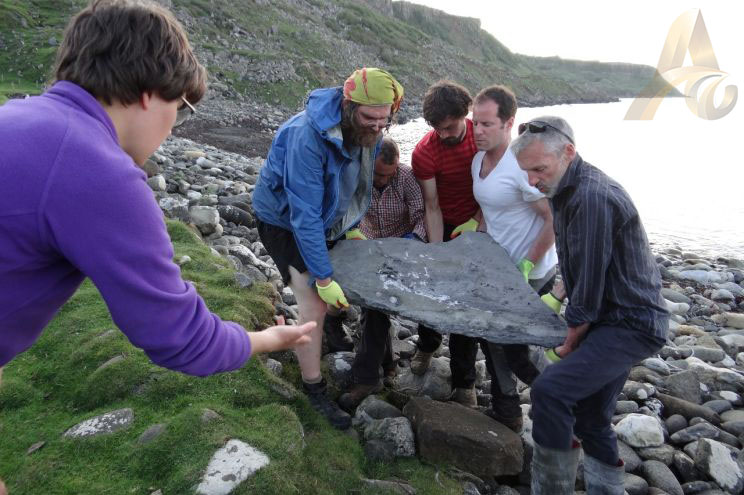INTERNATIONAL: A fossil jawbone peeking out from a limestone seashore on Scotland's Isle of Skye has led scientists to discover the skeleton of a pterosaur that showed that these remarkable flying reptiles got big tens of millions of years earlier than previously known.
Researchers have said on Tuesday ,February 22, the pterosaur, named Dearc Sgiathanach, had lived roughly 170 million years ago during the Jurassic Period, soaring over lagoons in a subtropical landscape and catching fish and squid with criss-crossing teeth perfect for snaring slippery prey.
Its scientific name, pronounced as "jark ski-an-ach," means "winged reptile" in Gaelic.
With a wingspan of about 8 feet ,2.5 meters, Dearc was the Jurassic's largest-known pterosaur and the biggest flying creature that had inhabited Earth to that point in time. Some pterosaurs during the subsequent Cretaceous Period achieved much greater dimensions - as big as fighter jets. But Dearc shows that this scaling up had its origins much earlier.
A forensic analysis of its bones indicated this Dearc individual was not fully grown and could have had a 10-foot or three-meter wingspan as an adult.
Dearc has weighed very little - probably below 22 pounds or 10 kilogram) ,thanks to its hollow, lightweight bones and slender structure, said University of Edinburgh paleontology doctoral student Natalia Jagielska, lead author of the research published in the journal Current Biology.
It had an elongated skull and a long, stiff tail. An arsenal of sharp teeth formed a cage when it bit down on prey.
Pterosaurs, which lived alongside the dinosaurs, were the first of three vertebrate groups to achieve powered flight, appearing about 230 million years ago. Birds appeared about 150 million years ago and bats around 50 million years ago.
Pterosaurs are some of the rarest vertebrates in the fossil record owing to their fragile bones, some with walls thinner than a sheet of paper.
“The specimen, is an anomaly because things like this don't usually happen. Pterosaurs are usually squashed because they are very delicate, and very rarely get preserved," Jagielska has said.
Up until when Dearc has lived, pterosaurs generally had been modest in size, many about the size of a seagull. The prevailing wisdom among scientists had been that pterosaurs did not reach Dearc's size until the Cretaceous, some 25 million years later, with the appearance of creatures like Huanhepterus, Feilongus and Elanodactylus. Quetzalcoatlus, appearing about 68 million years ago, boasted a wingspan of about 36 feet , like an F-16 fighter.
In Dearc's time, Britain was closer to the equator and existed as a series of smaller separate islands. Dearc lived alongside a menagerie of plant-eating and meat-eating dinosaurs, early mammals and marine reptiles.
Dearc was discovered in 2017, with the fossil jutting out from a limestone intertidal zone after the tide had gone down. The researchers battled the tide, first using hammers and chisels and then diamond-tipped saws. But the tide interrupted before the skeleton could be fully extracted.
"We almost lost the fossil. We had to let it go to let the tide lap over it, and we had to worry for several hours, come back nearly at midnight to collect it. And thankfully it was still there," said study co-author Steve Brusatte.






















